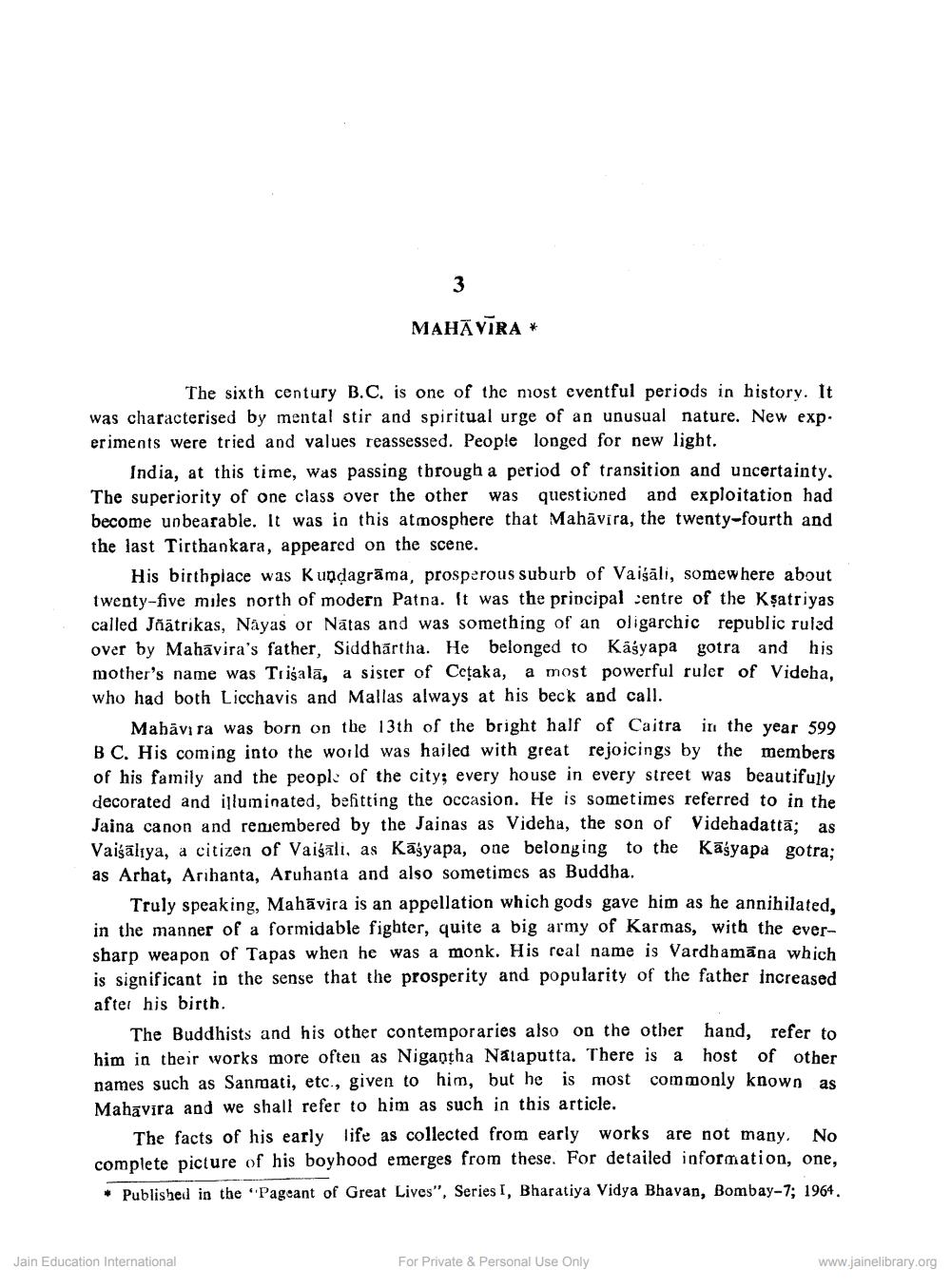________________
MAHĀVĪRA *
The sixth century B.C. is one of the most eventful periods in history. It was characterised by mental stir and spiritual urge of an unusual nature. New exp. eriments were tried and values reassessed. People longed for new light.
India, at this time, was passing through a period of transition and uncertainty. The superiority of one class over the other was questioned and exploitation had become unbearable. It was in this atmosphere that Mahāvira, the twenty-fourth and the last Tirthankara, appeared on the scene.
His birthplace was Kundagrāma, prosperous suburb of Vaiśāli, somewhere about twenty-five miles north of modern Patna. It was the principal centre of the Ksatriyas called Jõātrikas, Nayas or Nätas and was something of an oligarchic republic ruled over by Mahavira's father, Siddhartha. He belonged to Käsyapa gotra and his mother's name was Trišala, a sister of Cetaka, a most powerful ruler of Videha, who had both Licchavis and Mallas always at his beck and call.
Mahavira was born on the 13th of the bright half of Caitra in the year 599 BC. His coming into the world was hailed with great rejoicings by the members of his family and the people of the city; every house in every street was beautifully decorated and illuminated, befitting the occasion. He is sometimes referred to in the Jaina canon and renembered by the Jainas as Videha, the son of Videhadattā; as Vaisalya, a citizen of Vaigali, as Kāģyapa, one belonging to the Kāģyapa gotra: as Arhat, Arihanta, Aruhanta and also sometimes as Buddha.
Truly speaking, Mahāvira is an appellation which gods gave him as he annihilated. in the manner of a formidable fighter, quite a big army of Karmas, with the eversharp weapon of Tapas when he was a monk. His real name is Vardhamana which is significant in the sense that the prosperity and popularity of the father increased after his birth
The Buddhists and his other contemporaries also on the other hand, refer to him in their works more often as Nigantha Nataputta. There is a host of other names such as Sanmati, etc., given to him, but he is most commonly known as Mahavira and we shall refer to him as such in this article.
The facts of his early life as collected from early works are not many. No complete picture of his boyhood emerges from these. For detailed information, one, • Published in the Pageant of Great Lives", Series I, Bharatiya Vidya Bhavan, Bombay-7; 1964.
Jain Education International
For Private & Personal Use Only
www.jainelibrary.org




